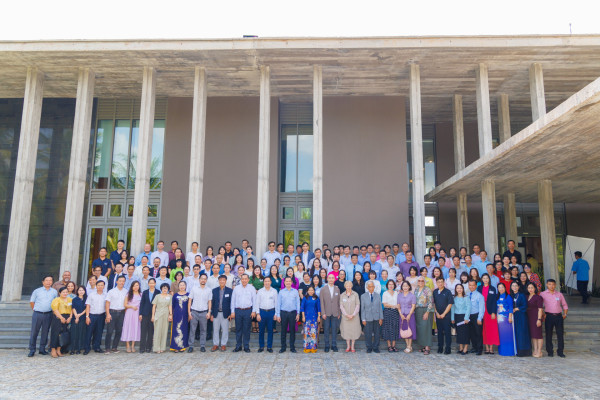10 principles of effective information management

This is being driven by a range of factors, including a need to improve the efficiency of business processes, the demands of compliance regulations and the desire to deliver new services.
In many cases, ‘information management’ has meant deploying new technology solutions, such as content or document management systems, data warehousing or portal applications.
These projects have a poor track record of success, and most organisations are still struggling to deliver an integrated information management environment.
Effective information management is not easy. There are many systems to integrate, a huge range of business needs to meet, and complex organisational (and cultural) issues to address.
This article draws together a number of ‘critical success factors’ for information management projects. These do not provide an exhaustive list, but do offer a series of principles that can be used to guide the planning and implementation of information management activities.
From the outset, it must be emphasised that this is not an article about technology. Rather, it is about the organisational, cultural and strategic factors that must be considered to improve the management of information within organisations.
The key goal of this article is to help information management projects succeed.
Exploring information management
‘Information management’ is an umbrella term that encompasses all the systems and processes within an organisation for the creation and use of corporate information.
In terms of technology, information management encompasses systems such as:
- web content management (CM)
- document management (DM)
- records management (RM)
- digital asset management (DAM)
- learning management systems (LM)
- learning content management systems (LCM)
- collaboration
- enterprise search
- and many more…
(For a brief overview of many of these systems, see the earlier article Definition of information management terms.)
Information management is, however, much more than just technology. Equally importantly, it is about the business processes and practices that underpin the creation and use of information.
It is also about the information itself, including the structure of information (‘information architecture’), metadata, content quality, and more.
Information management therefore encompasses:
- people
- process
- technology
- content
Each of these must be addressed if information management projects are to succeed.
Information management challenges
Organisations are confronted with many information management problems and issues. In many ways, the growth of electronic information (rather than paper) has only worsened these issues over the last decade or two.
Common information management problems include:
- Large number of disparate information management systems.
- Little integration or coordination between information systems.
- Range of legacy systems requiring upgrading or replacement.
- Direct competition between information management systems.
- No clear strategic direction for the overall technology environment.
- Limited and patchy adoption of existing information systems by staff.
- Poor quality of information, including lack of consistency, duplication, and out-of-date information.
- Little recognition and support of information management by senior management.
- Limited resources for deploying, managing or improving information systems.
- Lack of enterprise-wide definitions for information types and values (no corporate-wide taxonomy).
- Large number of diverse business needs and issues to be addressed.
- Lack of clarity around broader organisational strategies and directions.
- Difficulties in changing working practices and processes of staff.
- Internal politics impacting on the ability to coordinate activities enterprise-wide.
While this can be an overwhelming list, there are practical ways of delivering solutions that work within these limitations and issues.
Ten principles
This article introduces ten key principles to ensure that information management activities are effective and successful:
- recognise (and manage) complexity
- focus on adoption
- deliver tangible & visible benefits
- prioritise according to business needs
- take a journey of a thousand steps
- provide strong leadership
- mitigate risks
- communicate extensively
- aim to deliver a seamless user experience
- choose the first project very carefully
Each of these is discussed in the sections below.
Future articles will explore additional principles and guidelines, as well as providing a concrete approach to developing an overarching information management strategy.
Principle 1: recognise (and manage) complexity
Organisations are very complex environments in which to deliver concrete solutions. As outlined above, there are many challenges that need to be overcome when planning and implementing information management projects.
When confronted with this complexity, project teams often fall back upon approaches such as:
- Focusing on deploying just one technology in isolation.
- Purchasing a very large suite of applications from a single vendor, in the hope that this can be used to solve all information management problems at once.
- Rolling out rigid, standardised solutions across a whole organisation, even though individual business areas may have different needs.
- Forcing the use of a single technology system in all cases, regardless of whether it is an appropriate solution.
- Purchasing a product ‘for life’, even though business requirements will change over time.
- Fully centralising information management activities, to ensure that every activity is tightly controlled.
All of these approaches will fail, as they are attempting to convert a complex set of needs and problems into simple (even simplistic) solutions. The hope is that the complexity can be limited or avoided when planning and deploying solutions.
In practice, however, there is no way of avoiding the inherent complexities within organisations. New approaches to information management must therefore be found that recognise (and manage) this complexity.
Organisations must stop looking for simple approaches, and must stop believing vendors when they offer ‘silver bullet’ technology solutions.
Instead, successful information management is underpinned by strong leadership that defines a clear direction (principle 6). Many small activities should then be planned to address in parallel the many needs and issues (principle 5).
Risks must then be identified and mitigated throughout the project (principle 7), to ensure that organisational complexities do not prevent the delivery of effective solutions.
Principle 2: focus on adoption
Information management systems are only successful if they are actually used by staff, and it is not sufficient to simply focus on installing the software centrally.
In practice, most information management systems need the active participation of staff throughout the organisation.
For example:
- Staff must save all key files into the document/records management system.
- Decentralised authors must use the content management system to regularly update the intranet.
- Lecturers must use the learning content management system to deliver e-learning packages to their students.
- Front-line staff must capture call details in the customer relationship management system.
In all these cases, the challenge is to gain sufficient adoption to ensure that required information is captured in the system. Without a critical mass of usage, corporate repositories will not contain enough information to be useful.
This presents a considerable change management challenge for information management projects. In practice, it means that projects must be carefully designed from the outset to ensure that sufficient adoption is gained.
This may include:
- Identifying the ‘what’s in it for me’ factors for end users of the system.
- Communicating clearly to all staff the purpose and benefits of the project.
- Carefully targeting initial projects to build momentum for the project (see principle 10).
- Conducting extensive change management and cultural change activities throughout the project.
- Ensuring that the systems that are deployed are useful and usable for staff.
These are just a few of the possible approaches, and they demonstrate the wide implications of needing to gain adoption by staff.
Principle 3: deliver tangible & visible benefits
It is not enough to simply improve the management of information ‘behind the scenes’. While this will deliver real benefits, it will not drive the required cultural changes, or assist with gaining adoption by staff (principle 2).
In many cases, information management projects initially focus on improving the productivity of publishers or information managers.
While these are valuable projects, they are invisible to the rest of the organisation. When challenged, it can be hard to demonstrate the return on investment of these projects, and they do little to assist project teams to gain further funding.
Instead, information management projects must always be designed so that they deliver tangible and visible benefits.
Delivering tangible benefits involves identifying concrete business needs that must be met (principle 4). This allows meaningful measurement of the impact of the projects on the operation of the organisation.
The projects should also target issues or needs that are very visible within the organisation. When solutions are delivered, the improvement should be obvious, and widely promoted throughout the organisation.
For example, improving the information available to call centre staff can have a very visible and tangible impact on customer service.
In contrast, creating a standard taxonomy for classifying information across systems is hard to quantify and rarely visible to general staff.
This is not to say that ‘behind the scenes’ improvements are not required, but rather that they should always be partnered with changes that deliver more visible benefits.
This also has a major impact on the choice of the initial activities conducted (principle 10).
Principle 4: prioritise according to business needs
It can be difficult to know where to start when planning information management projects.
While some organisations attempt to prioritise projects according to the ‘simplicity’ of the technology to be deployed, this is not a meaningful approach. In particular, this often doesn’t deliver short-term benefits that are tangible and visible (principle 3).
Instead of this technology-driven approach, the planning process should be turned around entirely, to drive projects based on their ability to address business needs.
In this way, information management projects are targeted at the most urgent business needs or issues. These in turn are derived from the overall business strategy and direction for the organisation as a whole.
For example, the rate of errors in home loan applications might be identified as a strategic issue for the organisation. A new system might therefore be put in place (along with other activities) to better manage the information that supports the processing of these applications.
Alternatively, a new call centre might be in the process of being planned. Information management activities can be put in place to support the establishment of the new call centre, and the training of new staff.
Principle 5: take a journey of a thousand steps
There is no single application or project that will address and resolve all the information management problems of an organisation.
Where organisations look for such solutions, large and costly strategic plans are developed. Assuming the results of this strategic planning are actually delivered (which they often aren’t), they usually describe a long-term vision but give few clear directions for immediate actions.
In practice, anyone looking to design the complete information management solution will be trapped by ‘analysis paralysis’: the inability to escape the planning process.
Organisations are simply too complex to consider all the factors when developing strategies or planning activities.
The answer is to let go of the desire for a perfectly planned approach. Instead, project teams should take a ‘journey of a thousand steps’.
This approach recognises that there are hundreds (or thousands) of often small changes that are needed to improve the information management practices across an organisation. These changes will often be implemented in parallel.
While some of these changes are organisation-wide, most are actually implemented at business unit (or even team) level. When added up over time, these numerous small changes have a major impact on the organisation.
This is a very different approach to that typically taken in organisations, and it replaces a single large (centralised) project with many individual initiatives conducted by multiple teams.
While this can be challenging to coordinate and manage, this ‘thousand steps’ approach recognises the inherent complexity of organisations (principle 1) and is a very effective way of mitigating risks (principle 7).
It also ensures that ‘quick wins’ can be delivered early on (principle 3), and allows solutions to be targeted to individual business needs (principle 4).
Principle 6: provide strong leadership
Successful information management is about organisational and cultural change, and this can only be achieved through strong leadership.
The starting point is to create a clear vision of the desired outcomes of the information management strategy. This will describe how the organisation will operate, more than just describing how the information systems themselves will work.
Effort must then be put into generating a sufficient sense of urgency to drive the deployment and adoption of new systems and processes.
Stakeholders must also be engaged and involved in the project, to ensure that there is support at all levels in the organisation.
This focus on leadership then underpins a range of communications activities (principle 8) that ensure that the organisation has a clear understanding of the projects and the benefits they will deliver.
When projects are solely driven by the acquisition and deployment of new technology solutions, this leadership is often lacking. Without the engagement and support of key stakeholder outside the IT area, these projects often have little impact.
Principle 7: mitigate risks
Due to the inherent complexity of the environment within organisations (principle 1), there are many risks in implementing information management solutions. These risks include:
- selecting an inappropriate technology solution
- time and budget overruns
- changing business requirements
- technical issues, particularly relating to integrating systems
- failure to gain adoption by staff
At the outset of planning an information management strategy, the risks should be clearly identified. An approach must then be identified for each risk, either avoiding or mitigating the risk.
Risk management approaches should then be used to plan all aspects of the project, including the activities conducted and the budget spent.
For example, a simple but effective way of mitigating risks is to spend less money. This might involve conducting pilot projects to identifying issues and potential solutions, rather than starting with enterprise-wide deployments.
Principle 8: communicate extensively
Extensive communication from the project team (and project sponsors) is critical for a successful information management initiative.
This communication ensures that staff have a clear understanding of the project, and the benefits it will deliver. This is a pre-requisite for achieving the required level of adoption.
With many projects happening simultaneously (principle 5), coordination becomes paramount. All project teams should devote time to work closely with each other, to ensure that activities and outcomes are aligned.
In a complex environment, it is not possible to enforce a strict command-and-control approach to management (principle 1).
Instead, a clear end point (‘vision’) must be created for the information management project, and communicated widely. This allows each project team to align themselves to the eventual goal, and to make informed decisions about the best approaches.
For all these reasons, the first step in an information management project should be to develop a clear communications ‘message’. This should then be supported by a communications plan that describes target audiences, and methods of communication.
Project teams should also consider establishing a ‘project site’ on the intranet as the outset, to provide a location for planning documents, news releases, and other updates.
Principle 9: aim to deliver a seamless user experience
Users don’t understand systems. When presented with six different information systems, each containing one-sixth of what they want, they generally rely on a piece of paper instead (or ask the person next to them).
Educating staff in the purpose and use of a disparate set of information systems is difficult, and generally fruitless. The underlying goal should therefore be to deliver a seamless user experience, one that hides the systems that the information is coming from.
This is not to say that there should be one enterprise-wide system that contains all information.
There will always be a need to have multiple information systems, but the information contained within them should be presented in a human-friendly way.
In practice, this means:
- Delivering a single intranet (or equivalent) that gives access to all information and tools.
- Ensuring a consistent look-and-feel across all applications, including standard navigation and page layouts.
- Providing ‘single sign-on’ to all applications.
Ultimately, it also means breaking down the distinctions between applications, and delivering tools and information along task and subject lines.
For example, many organisations store HR procedures on the intranet, but require staff to log a separate ‘HR self-service’ application that provides a completely different menu structure and appearance.
Improving on this, leave details should be located alongside the leave form itself. In this model, the HR application becomes a background system, invisible to the user.
Care should also be taken, however, when looking to a silver-bullet solution for providing a seamless user experience. Despite the promises, portal applications do not automatically deliver this.
Instead, a better approach may be to leverage the inherent benefits of the web platform. As long as the applications all look the same, the user will be unaware that they are accessing multiple systems and servers behind the scenes.
Of course, achieving a truly seamless user experience is not a short-term goal. Plan to incrementally move towards this goal, delivering one improvement at a time.
Principle 10: choose the first project very carefully
The choice of the first project conducted as part of a broader information management strategy is critical. This project must be selected carefully, to ensure that it:
- demonstrates the value of the information management strategy
- builds momentum for future activities
- generates interest and enthusiasm from both end-users and stakeholders
- delivers tangible and visible benefits (principle 3)
- addresses an important or urgent business need (principle 4)
- can be clearly communicated to staff and stakeholders (principle 8)
- assists the project team in gaining further resources and support
Actions speak louder than words. The first project is the single best (and perhaps only) opportunity to set the organisation on the right path towards better information management practices and technologies.
The first project must therefore be chosen according to its ability to act as a ‘catalyst’ for further organisational and cultural changes.
In practice, this often involves starting with one problem or one area of the business that the organisation as a whole would be interested in, and cares about.
For example, starting by restructuring the corporate policies and procedures will generate little interest or enthusiasm. In contrast, delivering a system that greatly assists salespeople in the field would be something that could be widely promoted throughout the organisation.
Conclusion
Implementing information technology solutions in a complex and ever-changing organisational environment is never easy.
The challenges inherent in information management projects mean that new approaches need to be taken, if they are to succeed.
This article has outlined ten key principles of effective information management. These focus on the organisational and cultural changes required to drive forward improvements.
The also outline a pragmatic, step-by-step approach to implementing solutions that starts with addressing key needs and building support for further initiatives. A focus on adoption then ensures that staff actually use the solutions that are deployed.
Of course, much more can be written on how to tackle information management projects. Future articles will further explore this topic, providing additional guidance and outlining concrete approaches that can be taken.
James Robertson
Nguồn tin: www.steptwo.com.au
Ý kiến bạn đọc
Những tin mới hơn
Những tin cũ hơn
-
 Hơn 150 nhà khoa học tham dự Hội nghị quốc tế ICLISSP 2025 tại Quy Nhơn
Hơn 150 nhà khoa học tham dự Hội nghị quốc tế ICLISSP 2025 tại Quy Nhơn
-
 KHOA THÔNG TIN – THƯ VIỆN TỔ CHỨC HỘI NGHỊ VIÊN CHỨC, NGƯỜI LAO ĐỘNG VÀ TỔNG KẾT NĂM HỌC 2024–2025
KHOA THÔNG TIN – THƯ VIỆN TỔ CHỨC HỘI NGHỊ VIÊN CHỨC, NGƯỜI LAO ĐỘNG VÀ TỔNG KẾT NĂM HỌC 2024–2025
-
 GIỚI THIỆU SÁCH MỚI: “GIÁO TRÌNH NHẬP MÔN QUẢN TRỊ THÔNG TIN”
GIỚI THIỆU SÁCH MỚI: “GIÁO TRÌNH NHẬP MÔN QUẢN TRỊ THÔNG TIN”
-
 TRẢI NGHIỆM THỰC TẾ – GẮN KẾT CHUYÊN MÔN: CHUYẾN THỰC TẬP CỦA SINH VIÊN NGÀNH QUẢN LÝ THÔNG TIN VÀ THÔNG TIN – THƯ VIỆN TẠI QUẢNG NINH
TRẢI NGHIỆM THỰC TẾ – GẮN KẾT CHUYÊN MÔN: CHUYẾN THỰC TẬP CỦA SINH VIÊN NGÀNH QUẢN LÝ THÔNG TIN VÀ THÔNG TIN – THƯ VIỆN TẠI QUẢNG NINH
-
 🎓 CHÚC MỪNG 103 TÂN CỬ NHÂN NGÀNH QUẢN LÝ THÔNG TIN & THÔNG TIN - THƯ VIỆN KHÓA 66!
🎓 CHÚC MỪNG 103 TÂN CỬ NHÂN NGÀNH QUẢN LÝ THÔNG TIN & THÔNG TIN - THƯ VIỆN KHÓA 66!
- Đang truy cập25
- Hôm nay4,686
- Tháng hiện tại164,489
- Tổng lượt truy cập5,496,081
